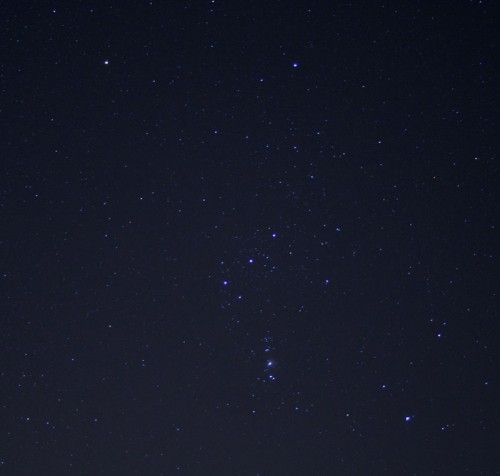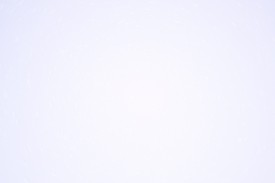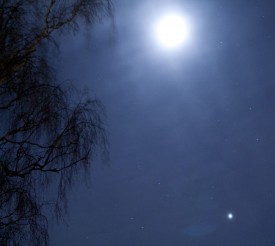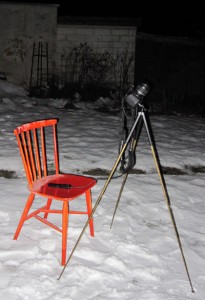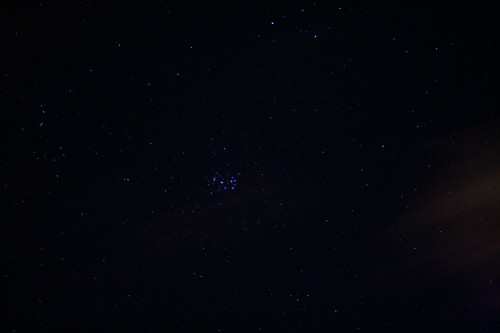I am spending a long weekend at my parents’ summer house in Bønnerup, Jutland. It is a small and fairly isolated town near the sea, so it is wonderfully dark at night. The summer house has a balcony that points straight north towards the sea, and I have therefore appointed it as headquarters for my star trail experiments. Since shooting long star trails takes hours, it is nice to be able to go inside while the camera is working. Especially when it is freezing outside.
Last night offered a few hours of clear sky. Since there is much less light pollution here I decided to try a long exposure with low ISO and a not-so-big aperture. I pointed my camera at Polaris, focused and started the exposure. During the next couple of hours I spend most of the time inside, once in a while checking that there was no clouds drifting in and that the batteries were still working. After two hours I ended the exposure and transferred the image to my computer. But what I saw was very disappointing.
The image was overexposed, but I had expected that. I had saved the image using both RAW and high resolution JPEG. While the RAW image was saved about two hours after I started the exposure, the JPEG image was saved just a few minutes after. Both images insisted that they had only been exposed for 474 seconds, yet the star trails seemed much longer than that. I have no clue what happened.
The trails were very faint, so I guess the ISO was too low. Also, clouds must have drifted in while I was looking away, because the bottom third of the image was all hazy. Finally (and most embarrassingly) I had forgotten to clean the lens, so there were a few smudges on the image.
I used Photoshop to lower the exposure and increase the contrast in an attempt to make the faint star trails stand out more. Though the length of the star trails is cool, the final image is pretty crappy. But I have learned my lesson: next time I will take many short exposures and combine them.

